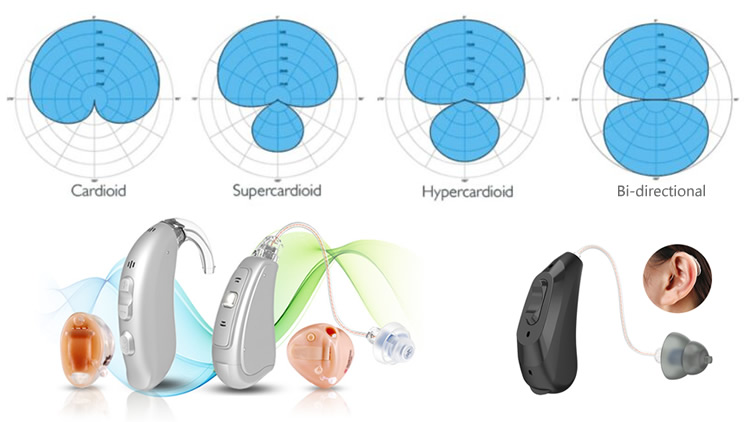What is a hearing aid directional microphone?
In daily life, we are surrounded by environmental noise all the time. For people with normal hearing, general environmental noise will not affect our communication with others, because our ears and brain have better noise reduction function. However, for hearing impaired people, their independent noise reduction ability has been greatly weakened. At this time, they need hearing aids to reduce noise to help them improve their speech clarity in noisy environments. In addition to conventional noise reduction functions, many hearing aids can also achieve noise reduction through directional microphones. What is a directional microphone and how does it achieve noise reduction?
In the past, hearing aids used to have only one microphone to collect all the sounds from around, but today's directional microphones are often composed of two or more microphones. They can only pick up the sounds in the direction of the main information source, and reduce the sounds in other directions to improve the signal-to-noise ratio and help the hearing impaired hear more clearly.
At present, the common directional microphones are roughly divided into four types, namely cardioid, supercardioid, Hypercardioid and Bi-directional.

Cardioid: Focus on collecting and amplifying the acoustic signal from the front and sides, while attenuating the rear acoustic signal. It can be applied to various face-to-face environments such as classes, meetings, restaurants, etc. Some special occupations, such as the working environment of bank tellers, are also suitable for this type of microphone.
Supercardioid: Focus on collecting and amplifying the sound signal in front, followed by the sound signal in the rear, lower sensitivity to the sound signal on both sides, and suppress the sound signal obliquely behind. It can be applied to the noise environment of restaurants.
Hypercardioid: On the basis of supercardioid, it strengthens the collection of rear acoustic signals, at the same time weakens the sensitivity to the acoustic signals on both sides, and suppresses the sound signals at the oblique rear. The same applies to environments such as restaurants or group discussions.
Bi-directional: On the basis of supercardioid, it strengthens the collection of rear acoustic signals, at the same time weakens the sensitivity to the acoustic signals on both sides, and suppresses the acoustic signals at the oblique rear.
Although directional microphones can help us improve the signal-to-noise ratio, they are not suitable for everyone. In life, we still want hearing-impaired people to hear everything, but if it's affecting their daily communication, directional microphones are a great technology to improve speech intelligibility. At the same time, for the special group of children, we do not recommend the use of directional microphones, but omnidirectional microphones. Because children are still learning about the voices of the world, we should want them to hear all voices.
Cadenza is an OTC hearing aid brand that supplies hearing aids to the hearing impaired and to distributors. If you are interested in OTC hearing aids, please contact us.
- Recent Posts
- The OTC Hearing Aid Wholesale Core – Customization, Compliance, and Smart Auditory Tech
- CADENZA A6: 100H Battery and 32-Channel Tech for OTC Hearing Aid Differentiation
- OTC Hearing Aid Dividends: CADENZA OEM/ODM Strategy for CVS/Best Buy Expansion
- Beyond Price: Why Global Distributors Choose CADENZA for OTC Hearing Aid Compliance and Volume
- Power Your Private Label: CADENZA Offers Unmatched OEM/ODM Scale for the OTC Hearing Aids
- The $100 Billion Question: How CADENZA Makes Quality Hearing Aids Affordable for Everyone
- Hearing is Believing: CADENZA Hearing Delivers Premium Quality Without the Prescription Price
- Discreet RIC Hearing Aids for a Natural Fit
- Smart Hearing Aids: App Control & Bluetooth for OTC
- Types of Hearing Aids
- BTE hearing aids
- ITE hearing aids
- Instant fit CIC hearing aids
- Rechargeable hearing aids
- RIC hearing aids
